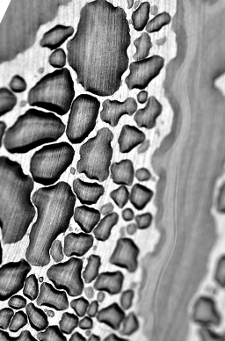Tandem cells tested
 Japanese researchers have combined two new technologies to obtain higher solar-to-hydrogen conversion efficiency.
Japanese researchers have combined two new technologies to obtain higher solar-to-hydrogen conversion efficiency.
All around the world, money is being poured into hydrogen as a feasible clean alternative to fossil fuels.
Hydrogen is practically inexhaustible and when used to generate energy, only produces water vapor. However, to realize a truly eco-friendly hydrogen society, the world needs to be able to mass-produce hydrogen cleanly in the first place.
One way to do that is by splitting water via ‘artificial photosynthesis’, wherein materials called ‘photocatalysts’ leverage solar energy to produce oxygen and hydrogen from water.
However, the available photocatalysts are not yet where they need to be to make solar-powered water splitting economically feasible and scalable.
Researchers at the Nagoya Institute of Technology in Japan are exploring new materials and their combinations and gaining insight into the physicochemical mechanisms that underlie their performances.
In their latest study, they combined titanium oxide (TiO2) and p-type cubic SiC (3C-SiC), two promising photocatalyst materials, into a tandem structure that makes for a highly durable and efficient water splitting cell.
Since each material absorbs solar energy at different frequency bands, the tandem structure can markedly increase the conversion efficiency of the water splitting cell by allowing more of the incoming light to excite charge carriers and generate the necessary currents.
The team measured the effects of applied external voltage and pH on the photocurrents generated in the cell and then conducted water splitting experiments under different light intensities.
They also measured the amounts of oxygen and hydrogen generated.
The results were highly encouraging, as research leader Dr Masashi Kato remarks: “The maximum applied-bias photon-to-current efficiency measured was 0.74 per cent. This value, coupled with the observed durability of about 100 days, puts our water splitting system among the best currently available”.
Additionally, the findings of this study hinted at some of the potential mechanisms behind the observed performance of the proposed tandem structure.
Further research is needed to continue improving photoelectrochemical water splitting systems until they become widely applicable. Still, this study is an exciting step towards a clean future.
“Our contributions shall accelerate the development of artificial photosynthesis technologies, which will generate energy resources directly from solar light. Thus, our findings may assist in the realization of sustainable societies,” says Dr Kato.







 Print
Print